- Home
- Jane Austen
Pride and Prejudice Page 2
Pride and Prejudice Read online
Page 2
I want to pursue this idea of Pride and Prejudice as a ‘powerfully persuasive’ text, and to develop my suggestion that it is Austen’s deployment of the conventional, pleasurable romantic plot, and a rather less conventional heroine, which makes it so. At one level, we are simply being persuaded that two particular individuals are right for each other, that – against all the social odds – Fitzwilliam Darcy is ‘exactly the man’, the only man, who could have satisfied Elizabeth Bennet’s emotional needs. The breathtaking arrogance of Darcy’s first proposal is, after all, gratifying evidence that individual desire transcends economic and social differences: ‘“My feelings will not be repressed”’ (II, xi). But personal happiness is inseparable from the world in which it must find expression: precisely because they transgress normal expectations of who can marry whom, Darcy’s private ‘feelings’ have an unavoidably public significance. Darcy’s romantic attachment involves a very clear rejection of the dynastic ambitions of his aunt, Lady Catherine de Bourgh, for example, with her plan that he should ‘unite the two estates’ by marrying his cousin (I, xvi). On the other hand, Elizabeth’s and Darcy’s unorthodox relationship is very explicitly distinguished from the shocking impropriety of Lydia’s irresponsible attachment to Wickham. Indeed, the moment at which Elizabeth finally recognizes Darcy as the answer to ‘all her wishes’ is also the moment at which fulfilment seems impossible, precisely because ‘An union of a different tendency, and precluding the possibility of the other, was soon to be formed in their family’ (III, viii). By this characteristic process of juxtaposition and contrast, Austen establishes Elizabeth’s and Darcy’s marriage as necessarily significant within the wider community. Our narrative and emotional commitment to their successful union becomes, imperceptibly, also a commitment to the values that union embodies.
Again, at one level, those values are concerned primarily with the ostensibly private world of morals and manners: in the comparison between Elizabeth and Lydia, with the point at which the right to autonomy becomes irresponsible self-indulgence; in the opposition to Lady Catherine, with the rival claims of personal choice and family aggrandisement as legitimate motives for marriage. But, precisely through that focus on individuals and communities, Austen’s novels intervene in wider political debate. Written in a period of political crisis and social mobility, they are strategic critical analyses of the moral values and modes of behaviour through which a section of the ruling class was redefining itself. Very few readers and critics would now endorse the myopic view represented by George Steiner’s comment: ‘At the height of political and industrial revolution, in a decade of formidable philosophic activity, Miss Austen composes novels almost extra-territorial to history.’4 It all depends, of course, on what you mean by ‘history’ and on where history is assumed to happen. Austen writes about ‘3 or 4 Families in a Country Village’ – ‘the very thing to work on’, as she told her niece Anna5 – and about the fates and choices of their marriageable daughters. She writes, therefore, about femininity and about class: about forms of identity and about marriage as a political institution which reproduces – symbolically as well as literally – the social order. An important feminist insight from the late sixties reminds us that ‘the personal is political’; and the reverse is also true. ‘Political and industrial revolution’ are enacted or resisted at the level of private consciousness as well as public event; historical change takes place through subtle shifts in social interaction, not just through wars and technology; much ‘formidable philosophic activity’ is concerned, like Pride and Prejudice, with the pursuit of happiness.
Access to the full political dimension of Austen’s novels depends on an understanding of the ways in which apparently inconsequential or private details of behaviour or language evoke wider debates. So far, I have stressed the pleasures of recognition on which Austen’s persuasive power depends: in terms of its romance plot, and the moral choices which that plot addresses, Pride and Prejudice feels familiar. But though the moral issues themselves may be easily recognizable, the public forms – the manners, the social assumptions, even the language – through which they manifest themselves for our judgement are often strange to a modern readership. Strangeness is itself another source of enjoyment, of course. Austen’s novels give us the difference of history, one of the important pleasures of which – beyond that of a purely aesthetic enjoyment – is the opportunity to make comparisons with our current moment. Austen works out her romance plots in terms of the everyday, material details of realist fiction, and her novels offer access to a particular, irretrievable lifestyle. But their economical attention to the lived texture of a social environment is never simply documentary or merely decorative. It would be a mistake to adopt a commodified view of that world as comfortingly stable, ordered and comprehensible. Austen’s fictional technique depends crucially on the reader as an active interpreter, not just a passive consumer, of detail. Her texts work on the shared assumption that nuances of language, or dress, or behaviour can carry very particular implications: as comparatively straightforward signs of social status, for example; as clues to a character’s moral attitude; or – more problematically for modern readers – as conscious references to the terms and issues which were being contested in contemporary cultural debates. Like its protagonists, Pride and Prejudice is vitally engaged in argument.
Mr Collins’s speech and behaviour, for example, make his absurd conceit abundantly clear. We could hardly fail to sympathize with Elizabeth’s acute sense of his awfulness as a prospective husband, nor to register the difference between his calculated and entirely impersonal criteria for a good wife and Darcy’s irrepressible response to Elizabeth’s individuality. It may be less obvious, however, that when Mr Collins obtusely insists on praising Elizabeth’s ‘modesty’ and ‘economy’ (I, xix), his terminology aligns him with advocates of a middle-class ideal of submissive, domestic womanhood, an ideal which was at the time an influential aspect of reactionary political discourse. Elizabeth’s very different mode of femininity, the ‘liveliness’ of mind which attracts Darcy, thus becomes politically charged – and the contrasting masculine identities of Darcy and Mr Collins similarly take on political, as well as moral and social, resonances.
This contrast between Mr Collins’s ideal woman and Elizabeth distances both Austen and her heroine from an extreme conservative view – as far as gender, at least, is concerned. Most commentators agree, however, that Austen’s novels do advocate an essentially conservative position. Their focus on a section of the rural ruling class, their concern with harmony, decorum, marriage itself, speaks for the consolidation and renewal of an established social order rather than for revolution. But, as the example of Mr Collins suggests, having established this broadly conservative position, it’s rather less easy to define Austen’s precise identity within it. This is partly a function of form, of the difference between a straightforwardly polemical text and a work of fiction, in which dramatization produces multiple possibilities for interpretation. It’s partly to do with the complex shifts within class hierarchies in the period – an issue I shall be returning to. And it’s partly to do with Austen’s status as a woman, which complicates the already difficult question of her class position. Women’s class status is traditionally determined by their father or husband. They exist in a liminal state neither inside nor outside class hierarchies, and gender can cut across and conflict with class or party politics. The precise conjunction of gender and class in Austen has been a vexed question in Austen criticism for some years. Does she, as some critics have suggested, present a subversive, proto-feminist critique which conflicts with her class politics? Or is she demonstrably anti-feminist, an anti-revolutionary defender of traditional femininity and family values? It’s probably most useful, I want to argue, to think of her as post-rather than simply anti-revolutionary, as strategically assimilating rather than blindly opposing ideas for change. Still using romance as an important focus, I want to go on now to explore in more detail Pride and
Prejudice’s persuasive dramatization of this ‘post-revolutionary’ position.
Pride and Prejudice began life in the 1790s as First Impressions, completed between October 1796 and August 1797 and unsuccessfully submitted for publication in November 1797. It was first conceived, therefore, during the immediate aftermath of the French Revolution, when Britain was at war with France and the repressive Pitt government was (with limited success) seeking to eradicate revolutionary ideas and activity on this side of the English Channel. This was a period of intense ideological debate, in which the personal was very definitely political. Edmund Burke’s anti-revolutionary Reflections on the Revolution in France, published in 1790, had eloquently defended feudal traditions of paternalism, property and aristocracy in terms which put sexual mores and the family at the centre of the political agenda. Burke famously lamented the passing of ‘the age of chivalry’, of ‘generous loyalty to rank and sex’, and argued that ‘we begin our public affections in our families’: ‘To be attached to the subdivision, to love the little platoon we belong to in society, is the first principle (the germ as it were) of public affections.’6
He was attacked by, among many others, Mary Wollstonecraft, professional writer and member of radical intellectual circles in London, and well known today as one of the first modern English feminists. In A Vindication of the Rights of Men (1790), Wollstonecraft defended revolutionary ideals, and argued that a ‘libertine imagination’, a predatory masculinity which reduced women to sexual objects, lay at the heart of Burkean traditionalism. For Wollstonecraft, Burke’s idea of the family enshrined sexual inequality. Two years later, in Vindication of the Rights of Woman, she developed that insight in a more sustained application of revolutionary principles to sexual politics. Rights of Woman claims liberty, equality and citizenship for women, and offers a devastating critique of the process by which women come to identify themselves as exclusively sexual beings, incapable of rational thought or independent action:
In short, women in general, as well as the rich of both sexes, have acquired all the follies and vices of civilization, and missed the useful fruit…[Women’s] senses are inflamed, and their understandings neglected, consequently they become the prey of their senses, delicately termed sensibility, and are blown about by every momentary gust of feeling. Civilized women are…weakened by false refinement…All their thoughts turn on things calculated to excite emotion and feeling, when they should reason…7
The kind of traditionalism represented by Burke was based on hierarchies of all kinds, including a sexual hierarchy within the family which took it for granted that the sexes are innately different. The egalitarian polemic of writers like Wollstonecraft did away with essential sexual difference by invoking a common human identity. Contemporary definitions of sexual difference tended to assign reason to men and feeling to women. In the passage just quoted, as throughout Rights of Woman, Wollstonecraft denies that opposition. She assumes that women’s capacity for reason is equal to that of men, even if, through inadequate education, that capacity often remains undeveloped. For Wollstonecraft, it is culture, not nature, which dictates that women behave like merely passive creatures of feeling, just as it is culture, not nature, which has allowed a self-perpetuating ruling class to reach a similar state of decadent self-indulgence. The ideal which she offers as an alternative to both – and to Burke’s defence of tradition – is that of the professional middle class, where education is a process of self- as well as public improvement:
In the middle rank of life…men, in their youth, are prepared for professions, and marriage is not considered as the grand feature of their lives; whilst women, on the contrary, have no other scheme to sharpen their faculties. It is not business, extensive plans, or any of the excursive flights of ambition, that engross their attention; no, their thoughts are not employed in rearing noble structures.8
Women have only one route to self-improvement: ‘To rise in the world, and have the liberty of running from pleasure to pleasure, they must marry advantageously, and to this object their time is sacrificed, and their persons often legally prostituted’.9 Instead, Wollstonecraft envisages the possibility of women becoming more publicly active participants in a middle-class meritocracy.
The characterization of women as ‘rational creatures’,10 the question of whether marriage is the only legitimate goal for a woman, the promotion of an active feminine identity and a professional ideal: these issues, raised by Wollstonecraft and others in the cause of revolutionary change, reverberate in political writing – and in fiction – throughout the 1790s and beyond. And they are clearly still very much current in Pride and Prejudice. In the 1790s radical women such as Mary Hays, Charlotte Smith and Wollstonecraft herself wrote experimental novels with active – even unchaste – heroines, novels which exposed the stifling limitations of the conventional happy-ever-after marriage; in response, anti-revolutionary novels by, for example, Jane West or Elizabeth Hamilton reasserted a virtuous, domestic feminine ideal, often through plots which demonstrate the catastrophic personal consequences of taking up radical ideas – or of giving in to ‘first impressions’. Drafts of Austen’s First Impressions have not survived, so we can’t know precisely how her original novel might have fitted into this fictional ‘war of ideas’. What is evident, however, is the broad resemblance between Austen’s plot and the plots of some of the more conservative novels of the 1790s. In Austen’s novel, Elizabeth has to learn to revise her first impressions, not just of Darcy but also of the unscrupulous Wickham; in conservative fiction, heroines similarly over-confident of their capacity to make independent decisions, and to act on them, learn the error of their self-assertive ways – often (unlike Elizabeth) by suffering near or utter ruin.
More than ten years intervened between the writing of First Impressions and the publication of Pride and Prejudice in January 1813. Austen ‘lopt and cropt’ First Impressions11 to produce the novel as we now know it, in a rather different political climate. In the later 1790s, with the failure of revolutionary ideals in France and repressive domestic policies at home, English radicals lost confidence and their voice became more muted; during the next decade, as the Napoleonic Wars went on, the sometimes hysterically reactionary atmosphere at the turn of the century also gradually gave way to a precarious conservative consensus, at least among the increasingly confident middle classes. Again, ideas about the role of women played a crucial part in these shifts of opinion. Conservatives and traditionalists could not ignore the new Wollstonecraftian femininity. It was violently discredited in some anti-revolutionary propaganda, usually by depicting Wollstonecraft and other radical women as prostitutes, ‘unsex’d females’ who advocated and practised ‘Gallic licentiousness’. But the idea that women might be active participants in culture also had a more complicated and pervasive effect: in a much modified form, active femininity was appropriated for the conservative cause of national family values, Burke’s ‘little platoon’.
The work of the evangelical writer Hannah More typifies this process. In many ways, More is the ideological opposite of Wollstonecraft. More herself, as well as other contemporary commentators, certainly presented the two women as the acceptable and unacceptable faces of womanhood, and a brief comparison of More with Wollstonecraft provides a very useful context against which to tease out the subtleties of Austen’s treatment of femininity in Pride and Prejudice. In her Strictures on the Modern System of Female Education (1799) More vehemently reasserts ‘natural’ sexual difference, implicitly answering Wollstonecraft’s belief in a human identity common to both sexes: ‘Each sex has its proper excellencies, which would be lost were they melted down into the common character.’12 On the basis of that difference, More makes a rousing appeal to women on behalf of their war-torn nation:
I would call on [women] to come forward, and contribute their full and fair proportion towards the saving of their country. But I would call on them to come forward, without departing from the refinement of their character, without der
ogating from the dignity of their rank, without blemishing the delicacy of their sex.13
The impact of the new femininity on conservative thinking is evident in More’s consciousness-raising call to women to ‘come forward’ into awareness of their central role in the nation’s survival. But, in opposition to Wollstonecraft, More aligns herself with a version of Burkean traditionalism – as that phrase ‘the dignity of their rank’ suggests. Rather than Wollstonecraft’s new and disruptive vision of a rational meritocracy, More appeals to women’s anxieties about the possible consequences of breaking established codes of femininity. She describes a comfortingly circumscribed form of involvement and defines female ‘excellencies’ in all-too-familiar terms. Her buzz-words are those of the conduct books, the popular manuals which instructed young women in appropriately decorous behaviour: works like James Fordyce’s Sermons to Young Women, which Mr Collins tries to read to the Bennet sisters (I, xiv), and which Wollstonecraft attacked in Rights of Woman as likely to ‘hunt every spark of nature out of [a girl’s] composition’.14 For More and the conduct writers, femininity consists in ‘refinement’, ‘delicacy’ – and propriety: ‘Propriety is to a woman…the first, the second, the third requisite’.15 In both More and conduct literature generally, such terms have a primarily moral meaning, but they are nevertheless terms which Wollstonecraft deeply mistrusted because they are complicit with more exclusively sexual definitions of women as decorative, vulnerable, in need of protection. In the first of the extracts I quoted above from Rights of Woman, for example, Wollstonecraft attacks the ‘false refinement’ which reduces women to creatures of sense rather than reason, and in her critique of Fordyce she contrasts ‘female meekness and artificial grace’ with the ‘true grace [which] arises from some kind of independence of mind’.16 In contrast with Wollstonecraft’s ideal of female autonomy, More’s view of women’s activity is seriously limited by the fear that they might blemish ‘the delicacy of their sex’. Laterin Strictures, for example, she offers a depressingly self-abnegating image of womanhood:

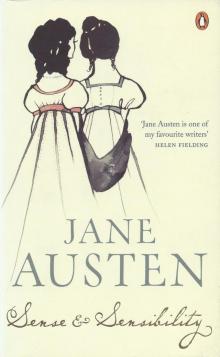 Sense and Sensibility
Sense and Sensibility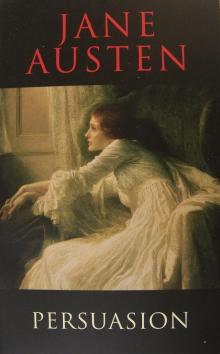 Persuasion
Persuasion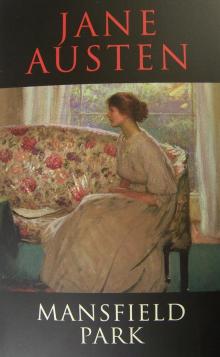 Mansfield Park
Mansfield Park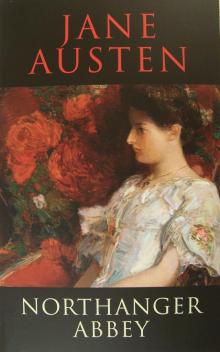 Northanger Abbey
Northanger Abbey Pride and Prejudice and Zombies
Pride and Prejudice and Zombies Pride and Prejudice
Pride and Prejudice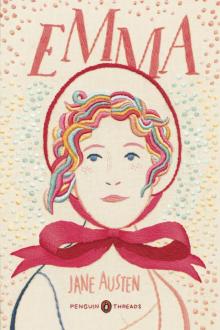 Emma
Emma Persuasion (Dover Thrift Editions)
Persuasion (Dover Thrift Editions)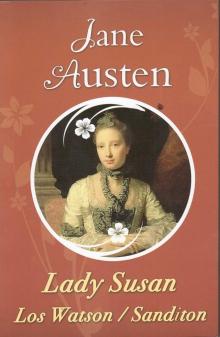 Lady Susan
Lady Susan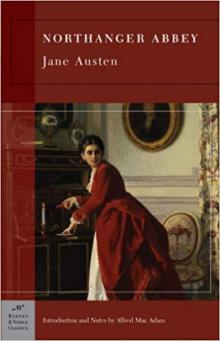 Northanger Abbey (Barnes & Noble Classics)
Northanger Abbey (Barnes & Noble Classics)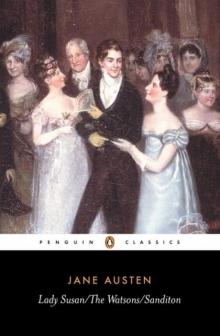 Lady Susan, the Watsons, Sanditon
Lady Susan, the Watsons, Sanditon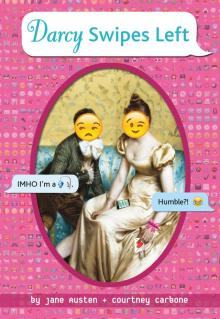 Darcy Swipes Left
Darcy Swipes Left Persuasion: Jane Austen (The Complete Works)
Persuasion: Jane Austen (The Complete Works)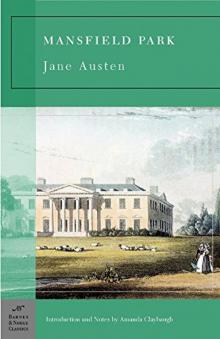 Mansfield Park (Barnes & Noble Classics Series)
Mansfield Park (Barnes & Noble Classics Series)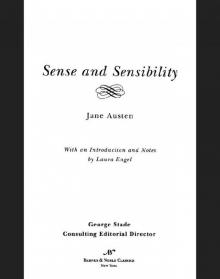 Sense and Sensibility (Barnes & Noble Classics Series)
Sense and Sensibility (Barnes & Noble Classics Series)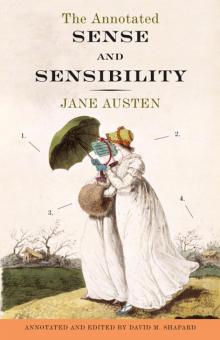 The Annotated Sense and Sensibility
The Annotated Sense and Sensibility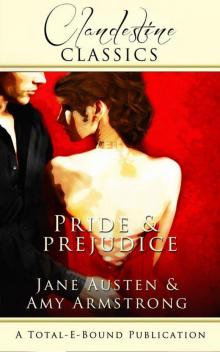 Pride and Prejudice (Clandestine Classics)
Pride and Prejudice (Clandestine Classics)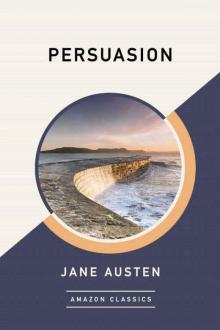 Persuasion (AmazonClassics Edition)
Persuasion (AmazonClassics Edition) Persuasion (Barnes & Noble Classics Series)
Persuasion (Barnes & Noble Classics Series)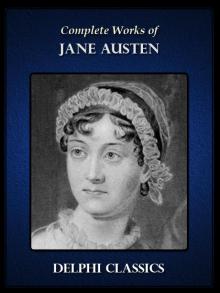 Complete Works of Jane Austen
Complete Works of Jane Austen The Watsons and Emma Watson
The Watsons and Emma Watson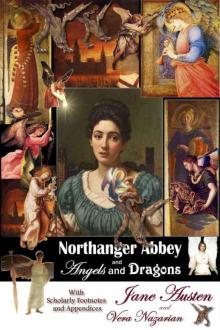 Northanger Abbey and Angels and Dragons
Northanger Abbey and Angels and Dragons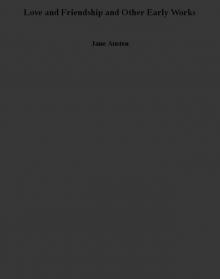 Love and Friendship and Other Early Works
Love and Friendship and Other Early Works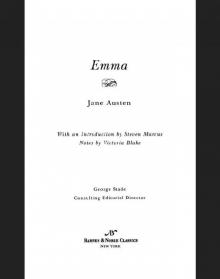 Emma (Barnes & Noble Classics Series)
Emma (Barnes & Noble Classics Series)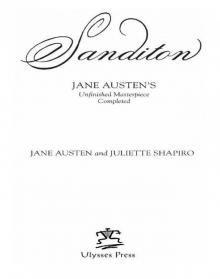 Sanditon
Sanditon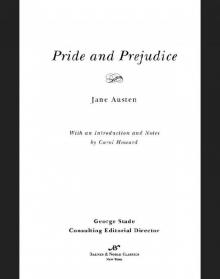 Pride and Prejudice (Barnes & Noble Classics Series)
Pride and Prejudice (Barnes & Noble Classics Series)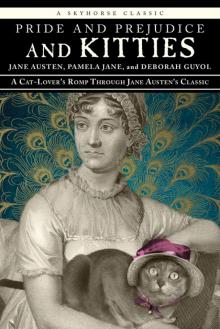 Pride and Prejudice and Kitties
Pride and Prejudice and Kitties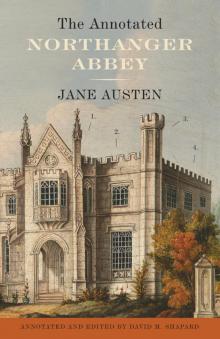 The Annotated Northanger Abbey
The Annotated Northanger Abbey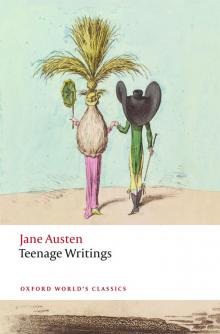 Oxford World’s Classics
Oxford World’s Classics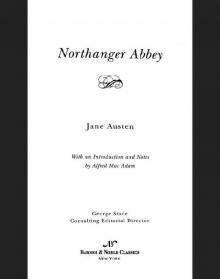 Northanger Abbey (Barnes & Noble Classics Series)
Northanger Abbey (Barnes & Noble Classics Series) The Annotated Persuasion
The Annotated Persuasion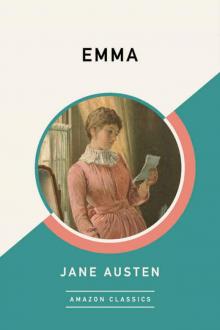 Emma (AmazonClassics Edition)
Emma (AmazonClassics Edition)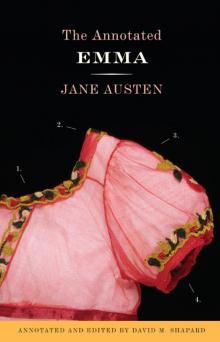 The Annotated Emma
The Annotated Emma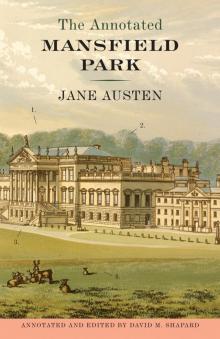 The Annotated Mansfield Park
The Annotated Mansfield Park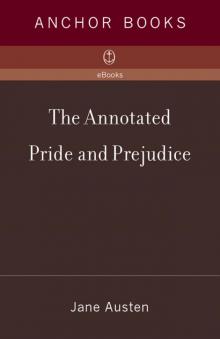 The Annotated Pride and Prejudice
The Annotated Pride and Prejudice